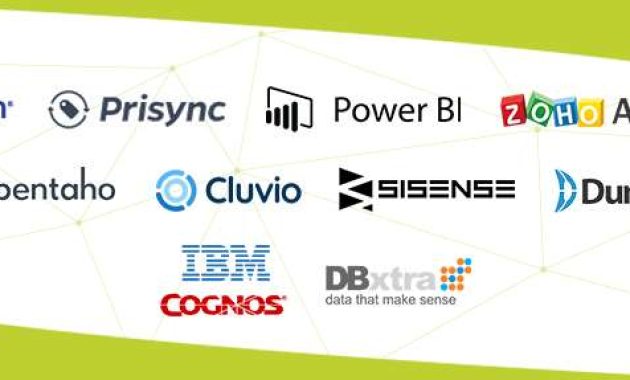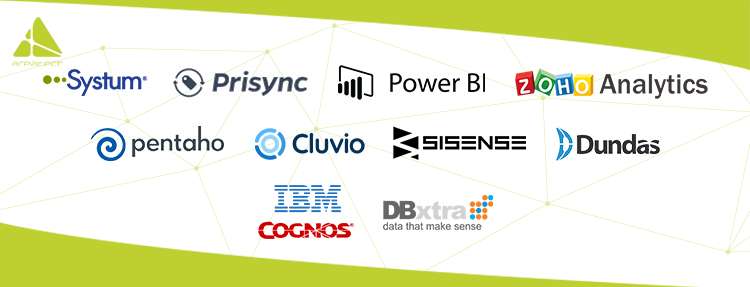
Top 10 Business Intelligence Tools Revealed: Powering Data-Driven Decisions in 2024
In today’s fast-paced business environment, data is king. Companies are drowning in information, but the ability to extract meaningful insights and make data-driven decisions is what separates the winners from the losers. This is where Business Intelligence (BI) tools come into play. These powerful software solutions transform raw data into actionable intelligence, empowering businesses to optimize operations, improve customer experiences, and increase profitability. This article reveals the top 10 business intelligence tools that are leading the charge in 2024, providing a comprehensive overview of their features, benefits, and ideal use cases. The core focus is on providing a clear understanding of these tools, helping you choose the best fit for your organization. The importance of choosing the right BI tool cannot be overstated. The tools mentioned are essential for any business looking to gain a competitive edge.
Understanding the Power of Business Intelligence
Business Intelligence is more than just fancy charts and graphs. It’s a strategic approach to analyzing data and making informed decisions. Effective BI tools provide a holistic view of your business, integrating data from various sources, such as sales, marketing, finance, and operations. This integrated view enables you to identify trends, spot anomalies, and understand the underlying drivers of your business performance. The insights gained from BI tools allow you to make proactive, rather than reactive, decisions. This leads to improved efficiency, reduced costs, and increased revenue. A well-implemented BI strategy is a cornerstone of modern business success.
Key Features to Look for in a BI Tool
Before diving into the top 10 tools, it’s crucial to understand the key features that make a BI solution effective. Look for tools that offer:
- Data Integration: The ability to connect to various data sources, including databases, cloud services, and spreadsheets.
- Data Visualization: Powerful charting and graphing capabilities to present data in an easily understandable format.
- Reporting and Dashboards: Customizable dashboards and reports that provide real-time insights into key performance indicators (KPIs).
- Data Analysis: Advanced analytical features, such as predictive analytics and data mining, to uncover hidden patterns.
- User-Friendly Interface: An intuitive interface that allows users of all skill levels to access and analyze data.
- Scalability: The ability to handle growing data volumes and user demands.
- Security: Robust security features to protect sensitive data.
Top 10 Business Intelligence Tools in 2024
Here’s a breakdown of the top 10 business intelligence tools, highlighting their strengths and ideal applications:
Tableau
Tableau is a leading BI tool renowned for its exceptional data visualization capabilities. Its drag-and-drop interface makes it easy to create stunning dashboards and reports. Tableau excels in data discovery and exploration, allowing users to quickly identify trends and insights. It supports a wide range of data sources and offers robust security features. [See also: Tableau vs. Power BI: Which Tool Is Right for You?]
Microsoft Power BI
Microsoft Power BI is a versatile and affordable BI solution that integrates seamlessly with other Microsoft products. It offers a user-friendly interface, powerful data modeling capabilities, and a vast library of pre-built visualizations. Power BI is an excellent choice for businesses of all sizes, particularly those already invested in the Microsoft ecosystem. Power BI’s pricing is attractive for many users.
Qlik Sense
Qlik Sense is a data analytics platform known for its associative engine, which allows users to explore data in a more intuitive way. It automatically identifies relationships between data points, enabling users to uncover hidden insights. Qlik Sense offers a wide range of advanced analytical features, including predictive analytics and natural language processing. Qlik Sense provides a unique approach to data exploration.
Looker
Looker, now part of Google Cloud, is a modern BI platform that emphasizes data governance and collaboration. It uses a semantic layer to define data consistently across the organization, ensuring everyone is working with the same definitions. Looker is ideal for organizations with complex data needs and a strong focus on data accuracy. Looker promotes data-driven decisions.
Sisense
Sisense is a powerful BI platform designed for handling large and complex datasets. It offers in-memory processing, enabling fast query performance. Sisense is known for its flexibility and ability to integrate with a wide range of data sources. It provides robust analytical capabilities, including predictive analytics. Sisense is a strong choice for complex data environments.
ThoughtSpot
ThoughtSpot is a search-driven analytics platform that allows users to ask questions about their data in natural language. Its intuitive interface makes it easy for anyone to access and analyze data, regardless of their technical skills. ThoughtSpot is ideal for democratizing data access and empowering business users to make their own discoveries. ThoughtSpot simplifies data analysis.
Domo
Domo is a cloud-based BI platform that offers a comprehensive suite of features, including data integration, visualization, and collaboration tools. It’s designed for real-time data analysis and offers mobile access, allowing users to stay connected to their data on the go. Domo is a good option for businesses that need a centralized BI solution. Domo offers real-time insights.
Zoho Analytics
Zoho Analytics is a self-service BI and data analytics platform that offers a user-friendly interface and a wide range of features at an affordable price. It’s a great option for small and medium-sized businesses that need a comprehensive BI solution. Zoho Analytics integrates seamlessly with other Zoho applications. Zoho Analytics is a cost-effective solution.
SAP Analytics Cloud
SAP Analytics Cloud is a cloud-based BI platform that integrates with SAP’s suite of business applications. It offers advanced analytical capabilities, including predictive analytics and planning. SAP Analytics Cloud is a good choice for businesses that use SAP products. SAP Analytics Cloud provides enterprise-grade analytics.
MicroStrategy
MicroStrategy is an enterprise-grade BI platform that offers a comprehensive suite of features, including data visualization, reporting, and advanced analytics. It’s known for its scalability and security features, making it a good choice for large organizations with complex data needs. MicroStrategy is a powerful BI solution. MicroStrategy offers robust security.
Choosing the Right BI Tool for Your Business
Selecting the right BI tool requires careful consideration of your business needs, data sources, and technical capabilities. Here’s a step-by-step guide to help you make the right choice:
- Define Your Business Goals: Identify the specific business problems you want to solve with BI.
- Assess Your Data Sources: Determine where your data resides and the formats it’s in.
- Evaluate Your Technical Skills: Consider the skill level of your users and the level of technical support you require.
- Compare Features and Pricing: Research the features and pricing of different BI tools.
- Request Demos and Trials: Test out the tools that meet your needs.
- Consider Integration: Ensure the tool integrates with existing systems.
The Future of Business Intelligence
The field of BI is constantly evolving, with new technologies and trends emerging regularly. Some of the key trends to watch in 2024 include:
- Artificial Intelligence (AI) and Machine Learning (ML): AI and ML are being integrated into BI tools to automate tasks, improve data analysis, and provide more accurate predictions.
- Cloud-Based BI: Cloud-based BI solutions are becoming increasingly popular due to their scalability, flexibility, and cost-effectiveness.
- Data Democratization: The trend of making data accessible to all users, regardless of their technical skills, is continuing to grow.
- Self-Service BI: Self-service BI tools are empowering business users to analyze data and make their own decisions.
The future of business intelligence is bright, and the tools highlighted in this article are leading the way. By embracing these tools and trends, businesses can unlock the full potential of their data and gain a significant competitive advantage. The insights gained from these tools are crucial.
Conclusion: Harnessing the Power of Data
Choosing the right BI tool is a critical step in transforming your data into actionable insights. The top 10 business intelligence tools revealed in this article offer a range of features and capabilities to meet the diverse needs of businesses of all sizes. By carefully considering your business goals, data sources, and technical skills, you can select the tool that best empowers you to make data-driven decisions and achieve your business objectives. The right tool is essential for success in today’s data-driven world. The power of data is undeniable. The best business intelligence tools will help you succeed.
[See also: How to Implement a Successful BI Strategy]

